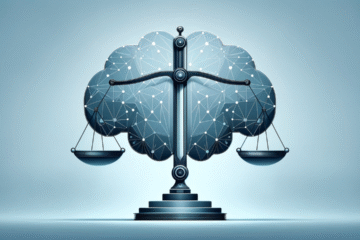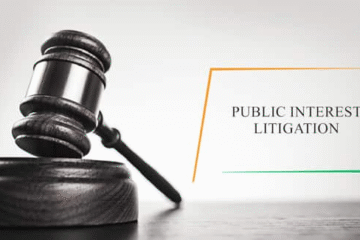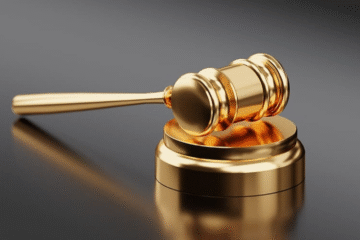
This Article is written by Shaista Waseem, a third-year BA.LL.B. (Hons) student at the Unity degree and law college Lucknow, Intern under Legal Vidhiya
ABSTRACTS
The 1st Amendment to the Constitution of India went into effect in 1951. It allows the state to take steps to promote social and economic advancement in the Scheduled Caste and Scheduled Tribe categories by restricting the applicability and exercise of fundamental rights. The following three reasonable restrictions were added to Paragraph 1 of Article 19:
- ‘Public Order’,
- ‘Friendly Relations With Foreign States, And
- ‘Incitement To An Offense’.
It states the validity of the State’s attempt to nationalize trade or commerce and is applied equally. The First Amendment was passed by the Provisional Congress elected by a minority of voters in 1951. The statement of Reasons for the First Amendment was, “Challenges to agricultural laws or laws relating to land reform which were pending in courts and were also holding up large schemes of land legislation through slow and wasteful lawsuits”.
Keywords: First constitutional amendment, constitutional law, article 19, article 15, effect of first constitutional amendment.
INTRODUCTION
Giving the status of a cornerstone to the Constitution of India, 1950 would be an underemphasis, as apart from being a support mechanism, it breathes life into the land laws. It is also considered the heart and soul of the legal fraternity of India and provides support to the victims of crime and serves as a cure for injustice.
The 1951 First Amendment Act[1]remains one of the most controversial amendments to the Indian Constitution. The First Amendment was debated for 16 days and enacted 16 months after the ratification of the Constitution of India. The Amendment is unique in the sense that it was created by a “Provisional Parliament” whose members had just enacted laws as part of the constitution.
The Commonwealth also followed the Dominion Assembly as part of the transition to Indian independence. After the ratification of the Constitution in 1950, the Dominion Assembly was dissolved and the Dominion Assembly was renamed the Dominion Assembly.
The First Amendment to the Constitution of India was drafted by members of the Congress Party and the Provisional Government led by Prime Minister Jawaharlal Nehru. No opposition parties were formally involved in the debate, as the reforms took place less than a year before the first parliamentary elections.
The latest Amendment to the Indian Constitution is the 105th Amendment Act, of 2021. It was introduced by Dr. Virendra Kumar (Minister of Social Justice and Empowerment) on 9th August 2021. The Bill seeks to reinstate the power of State Governments to identify OBCs that are considered socially and educationally backward. The Constitutional 105th Amendment also aims to amend Articles 366 (26c), 338B (9), Article 342A clauses 1 and 2, and also introduce clause 3.
It is drafted to clarify that the states have the power to maintain a “State List of OBCs”. The 102nd amendment to the constitution was only to frame a Central List that would be applicable only to the Central government and its institute. It did not talk about the State Lists of backward classes or the State Governments’ powers to proclaim a community backward.
FEATURES OF THE 1st AMENDMENT
The First Amendment of 1951 introduced three important changes:
- First, cl.(4) has been added to Article 15, which encourages the state to make special provisions for backward communities.
- Second, restrictions on freedom of expression rights to some extent.
- Third, add Section 31A, Section 31B, and Schedule 9 to initiate land reform and improve agriculture.
IMPORTANT CHANGES BROUGHT BY THE 1ST CONSTITUTIONAL AMENDMENT ACT, OF 1951
- The First Amendment Act, of 1951 amended Articles 15, 19, 85, 87, 174, 176, 341, 342, 372, and 376.
- Right to Non-Discriminationon the grounds of religion, race, caste, sex, or place of birth: Article 15 was added with the fourth clause stating that the government may make special laws in favor of any educationally and socially backward groups of citizens or for the Scheduled castes and the Scheduled tribes. Articles 15 and 29(2) of the Constitution do not prevent the state from providing benefits to these backward classes.
- Inserted the Ninth Schedule into the Constitution: It was enacted for the protection of the Land Reform and other laws present for judicial review.
- It inserted Articles 31A and 31B: Sections 31A and 31B have been added to the Constitution with sections 4 and 5 respectively. These regulations aim to eliminate conflicts and trade in agriculture.
- The following three reasonable restrictions were added to Paragraph 1 of Article 19:
- Public order
- Relations with foreign countries
- Terrorism
- The First Amendment was created as a precursor to amending the Constitution to override the declaration of the judiciary to implement government laws, reforms, plans, and policies.
- Article 19(1)(g) of the Constitution gives citizens of India the right to engage in any profession, trade, or business. The Amendment clearly states that State laws relating to business and the conduct of any trade or business are not invalid merely on the ground that they are violative of the right to trade or business.
- In response to the judgment of the State of Madras v. Champakam Dorairajan case[2] it made special provisions for the treatment of socially and educationally backward classes by inserting the 9th Schedule into the Constitution. It made the judicial review of the 9th schedule invalid. Although the Apex Court ruled in the case of Kesavananda Bharati ruled that judicial review of laws cannot be abolished as it is the basic structure doctrine, Articles 31(A), 31(B), and 31(C) protect laws related to land reform and prioritized the application of the Directive Principles of State Policy(DPSP) over individual liberty.
REASONS FOR THE ENACTMENT OF THE THE FIRST AMENDMENT
Some courts have ruled that the people’s right to freedom of speech and expression guaranteed by Article 19(1)(a) is too broad to even count the criminal against murder and other crimes. In other countries with written laws, freedom of expression and media freedom does not prevent the state from penalizing or preventing abuses of such freedoms. Therefore, for the above purposes, amending Article 19 and ensuring the legal validity of the general Zamindari laws and special rules in the country is the main objective.
Article 46 states that, under the State’s responsibility, the State will take care of the education and employment of the disadvantaged and social or educational backward groups of society and protect them from injustices in society. Any special provision of the State for the education, employment, or advancement of underdeveloped citizens was most needed and would not be hindered by discrimination.
Certain amendments with respect to articles that deal with the proroguing and convening of the Sessions of Parliament were found incumbent as such they were also incorporated into this Act. Amendments in respect of articles 341, 342, 372, and 376 were also necessary.
OBJECTIVES OF THE FIRST AMENDMENT
The Constitution of India was enacted in 1950 and the first amendment was made in the constitution even before the elections were held in the democracy. With this amendment, three important changes were made to the Constitution. The following points share the same goal:
- Restrictions on the right to freedom of speech and expression were needed – some additional reasonable restrictions were necessary, including terms such as ‘Public Order’, ‘Friendly Relations With Foreign States’, And ‘Incitement To An Offense’.
- There was a need to introduce special enactment for backward classes- A new Clause 4 was inserted in Article 15 as the drafters felt the necessity of making special provisions for the backward classes or for the Scheduled castes and Scheduled tribes.
- Land Reforms– Articles 31A and Article 31B were inserted to exempt land reforms from Constitutional scrutiny. Along with this, the Ninth schedule was added that incorporated the laws covering any challenge violation of fundamental rights of the citizen.
CHALLENGES BEFORE THE FIRST AMENDMENT BILL WAS PASSED
The First Amendment was introduced as it was believed that there were some problems in the functioning of the Indian Constitution. One of the main criticisms is that the amendment entered into force within 15 months of the law’s entry into force and without public consultation.
Moreover, on the basis of the Constitutional Provisions, several acts such as The Indian Press (Emergency Powers) Act, 1931, and Sections 124 to 153 of the Indian Penal Code were also questioned. The purpose of The Indian Press (Emergency Powers) Act, of 1931, was to “Provide Against The Publication Of Matter Inciting To Or Encouraging Murder Or Violence”. These were the grounds on the basis of which the First Amendment Bill was highly criticized. It even narrowed down the scope and amiability of the fundamental right under Article 19(1)(a).
CRITICISMS OF THE FIRST AMENDMENT ACT, 1951
In 1951, the First Amendment was passed without much scrutiny. The following points illustrate some of the criticisms of the 1951 First Amendment:
- In accordance with Article 31(A), the government has been given wide discretionary powers to acquire and hold property and these actions in turn violate Articles 14 and 19 of the Constitution of India. This led the government to act arbitrarily and became the subject of criticism.
- Restriction on free speech and expression- The three grounds of restrictions introduced with the First Amendment, raised several questions of ‘arbitrary state action’ by many juristic scholars.
- Abuse of the 9th Schedule- The 9th Schedule was added with the aim of causing land reforms and promoting the progress of the economic and social sphere of the agrarian sector. But the addition of 270 pieces of legislation in the 9th Schedule clearly justifies that the amendment has been misused.
- One of the arguments made by legislators against the wording in the First Amendment is that the interim government should wait until the first election to change the law.
- Opponents of the First Amendment have questioned the justice and legality of the body that was not elected to amend shortly after the Constitution was negotiated and enacted. Nehru said that because the Legislative Council and the interim members of parliament are the same, the interim parliament has the right to amend the constitution.
- Nehru also believed that Parliament represented the will of the people and that the measures taken by the provisional government were for the benefit of future generations. While Nehru framed the argument for amending the First Amendment as a belief that Parliament was the legitimate voice of the people, members once again opposed the amendment on the grounds that the interim government did not trust the wisdom of the people. people are traveling. The problem is the current conditions.
VALIDITY OF THE FIRST CONSTITUTIONAL AMENDMENT CHALLENGED
The First Amendment was challenged in Sri Shankari Prasad Singh Deo v. Union of India and Bihar [3]. The question was whether the amendment initiated under Article 368 falls within the scope of “law” as per Article 13 of the Constitution of India. The Court gave a negative answer and declared that the authority given to the Turkish Grand National Assembly by Article 368 is legal, and the word “law” in Article 13 means the authority to make laws.
RECENT DEVELOPMENT: 105th AMENDMENT TO THE CONSTITUTION
The latest Amendment to the Indian Constitution is the 105th Amendment Act, of 2021.[4] It was introduced by Dr. Virendra Kumar (Minister of Social Justice and Empowerment) on 9th August 2021. The Bill seeks to reinstate the power of State Governments to identify OBCs that are considered socially and educationally backward. The Constitutional 105th Amendment also aims to amend Articles 366 (26c), 338B (9), Article 342A clauses 1 and 2, and also introduce clause 3.
It is drafted to clarify that the states have the power to maintain a “State List of OBCs”. The 102nd amendment to the constitution was only to frame a Central List that would be applicable only to the Central government and its institute. It did not talk about the State Lists of backward classes or the State Governments’ powers to proclaim a community backward.
CONCLUSION
As an extension of the judicial system, the First Amendment changes many laws. The interpretation of Article 15 and the issues surrounding freedom of speech and expression appear dangerous to the legislature. Thus, within 15 months of the Constitution’s coming into force, the First Amendment was made. While the amendment was praised for its broad approach to guaranteeing the equality of all groups in society, it was criticized for restricting the freedom to cite from the extension of paragraph 2 of Article 19. The power to make changes belongs to the Assembly/Executive. In many cases, this power was used to justify his professionalism. It is therefore important that the Supreme Court fulfill its dual role of careful interpretation and evaluation. It is the judge’s job to limit powers or to declare reforms illegal and unconstitutional.
REFERENCES:-
[1]https://eparlib.nic.in/bitstream/123456789/58338/1/jcb_1951_constitution_1st_amendment_bill.pdf
[2] State of Madras v. Champakam Dorairajan, AIR 1951 SC 226.
[3] Sri Shankari Prasad Singh Deo v. Union of India 1951 SCR 89: AIR 1951 SC 458.
[4] https://www.livelaw.in/pdf_upload/105th-constitutional-amendment-act-398950.pdf




0 Comments